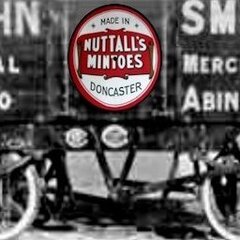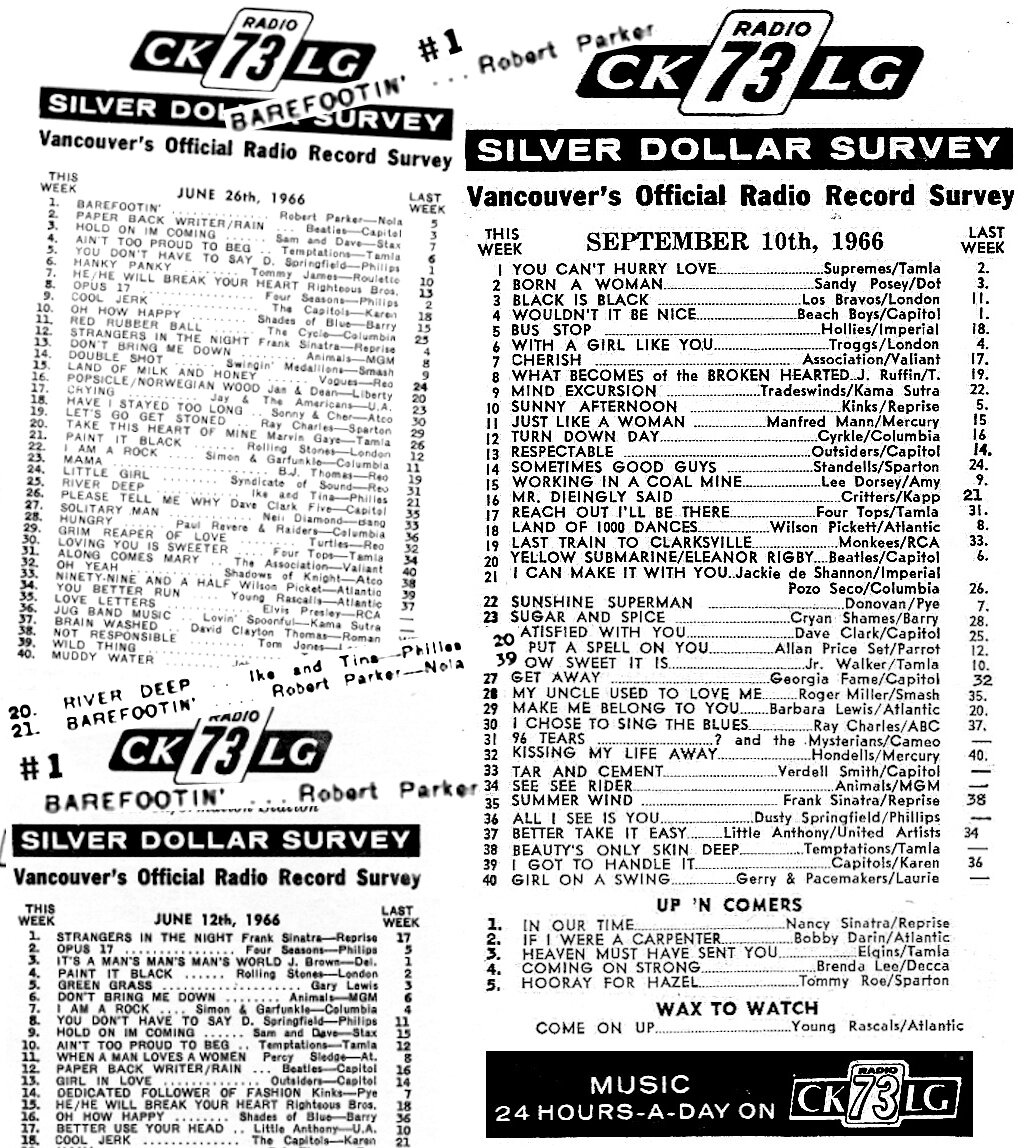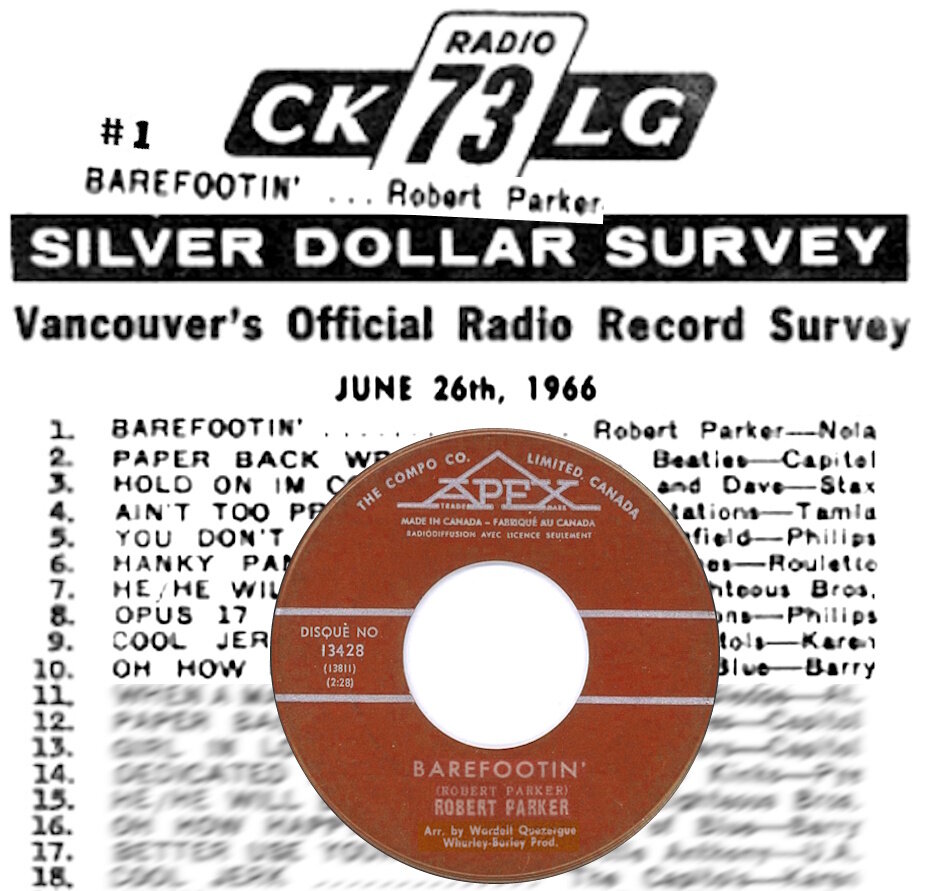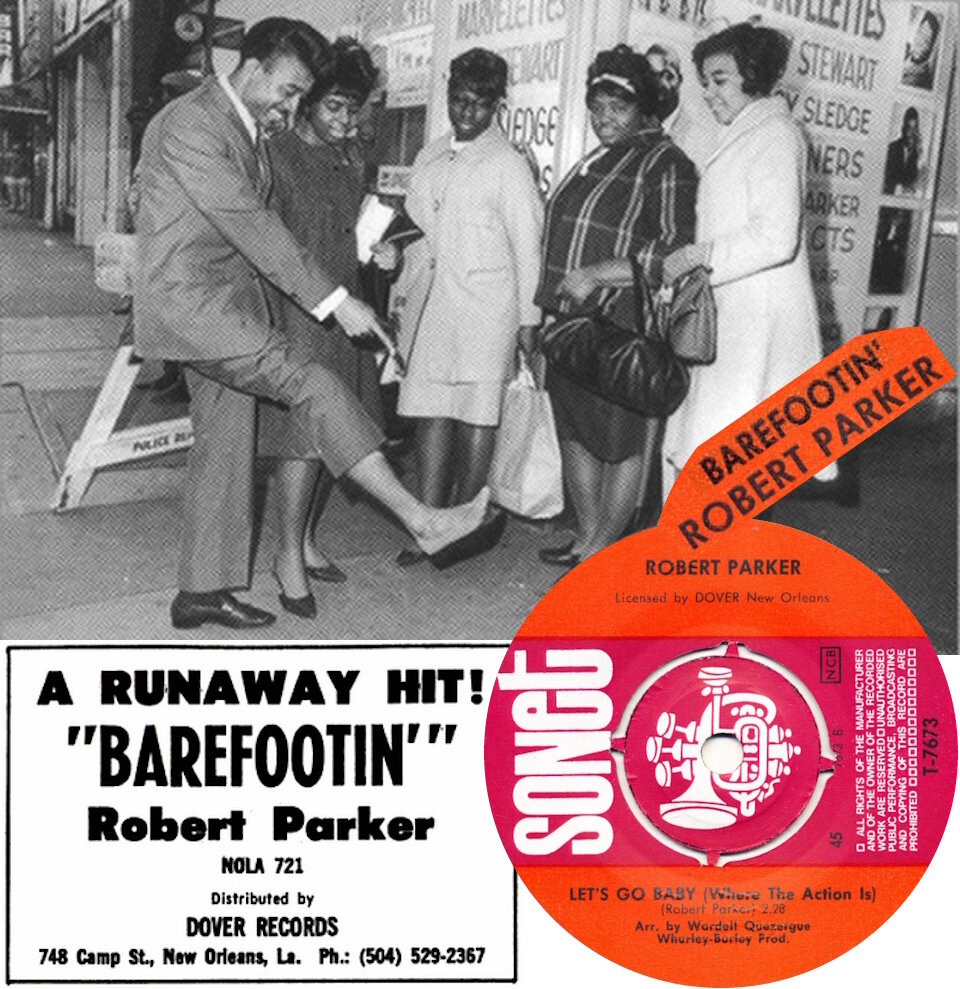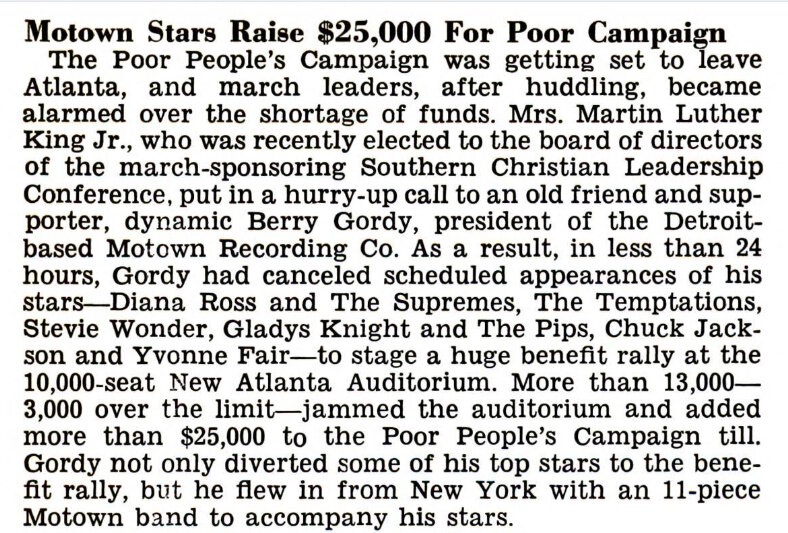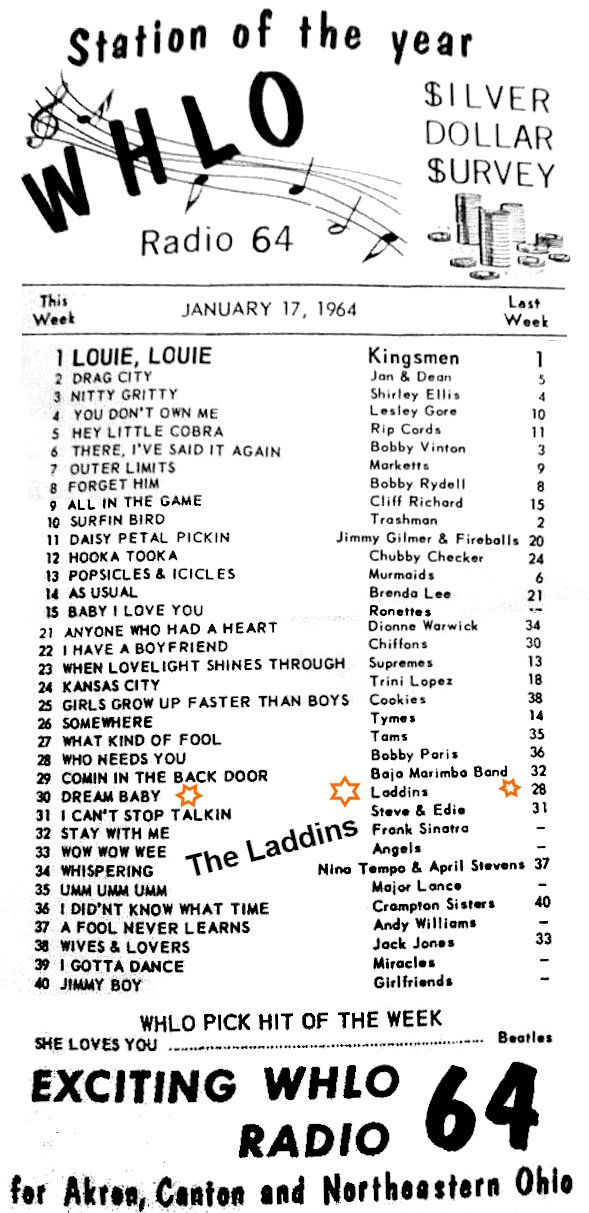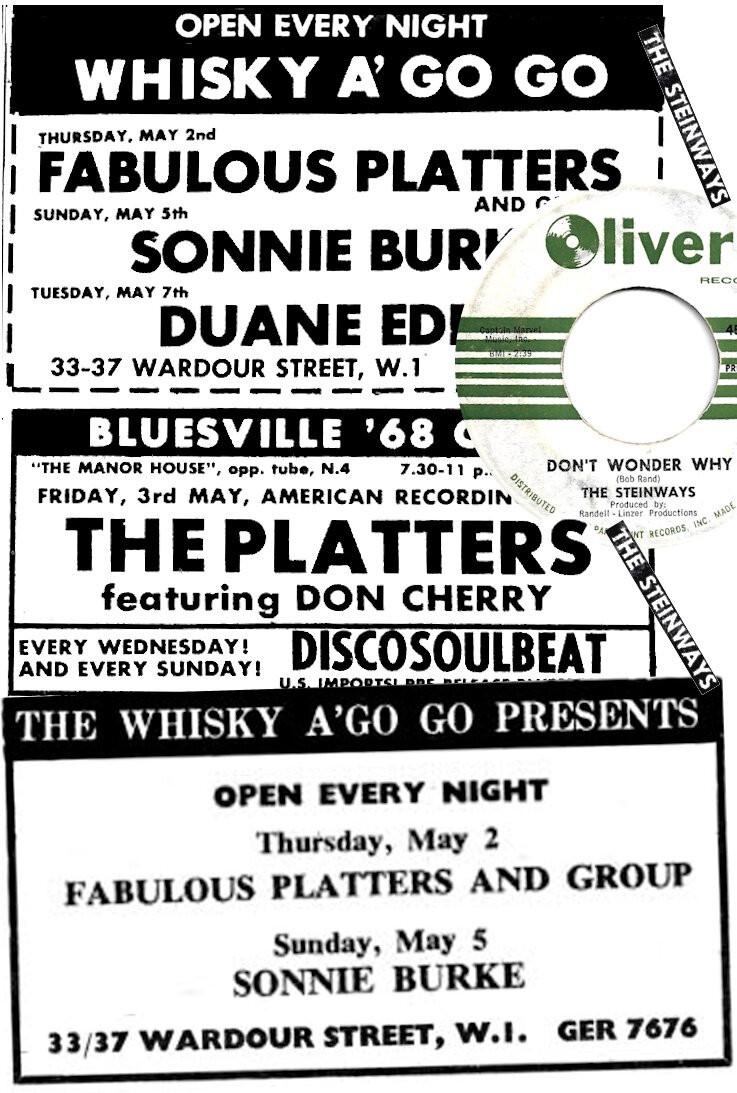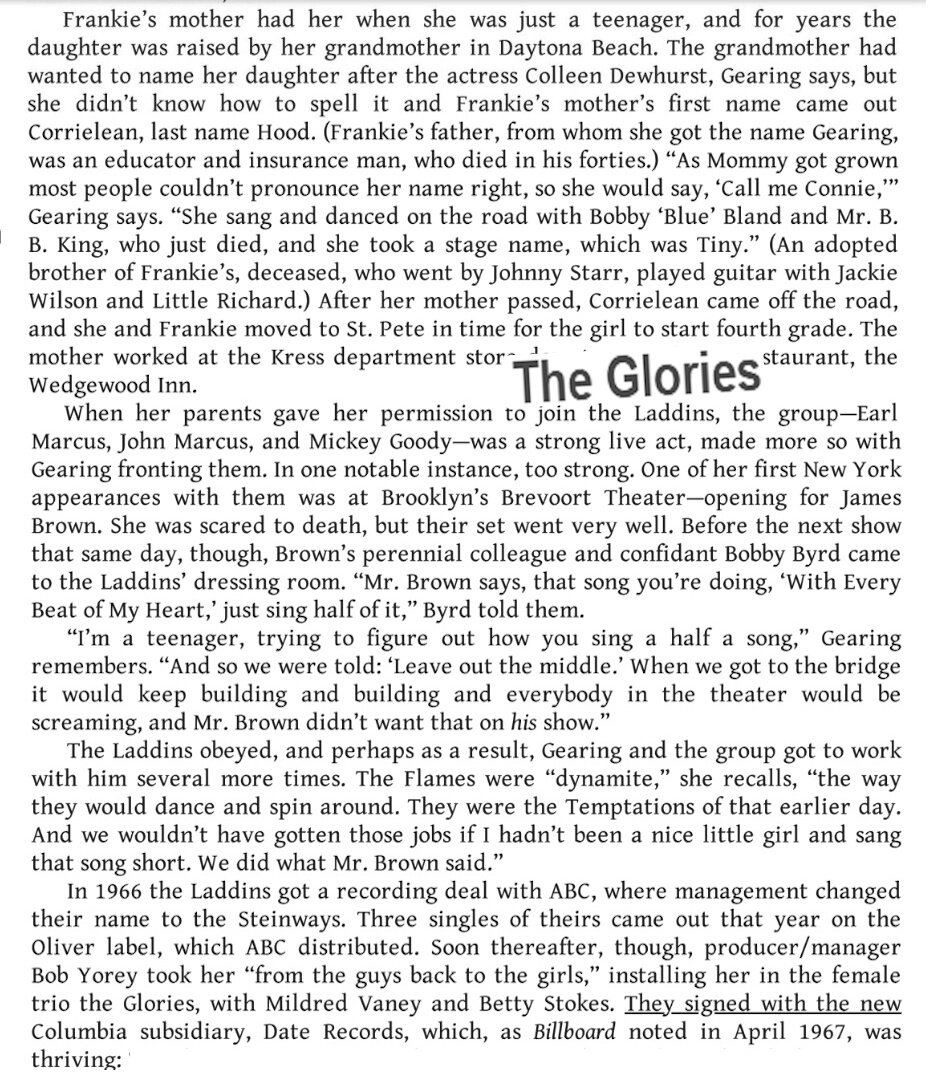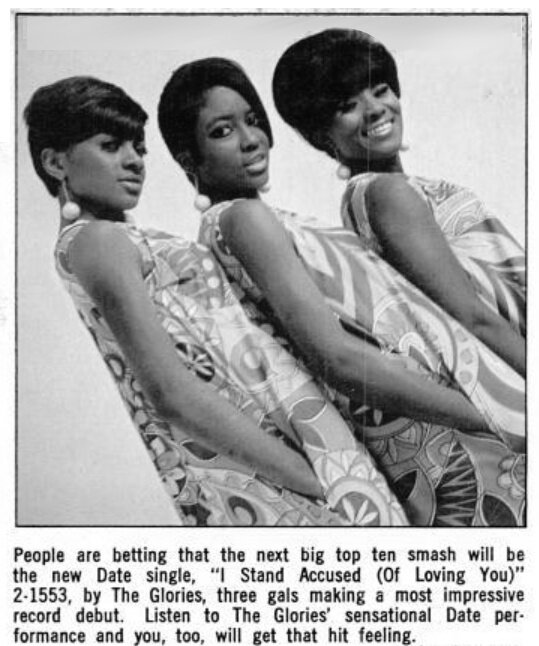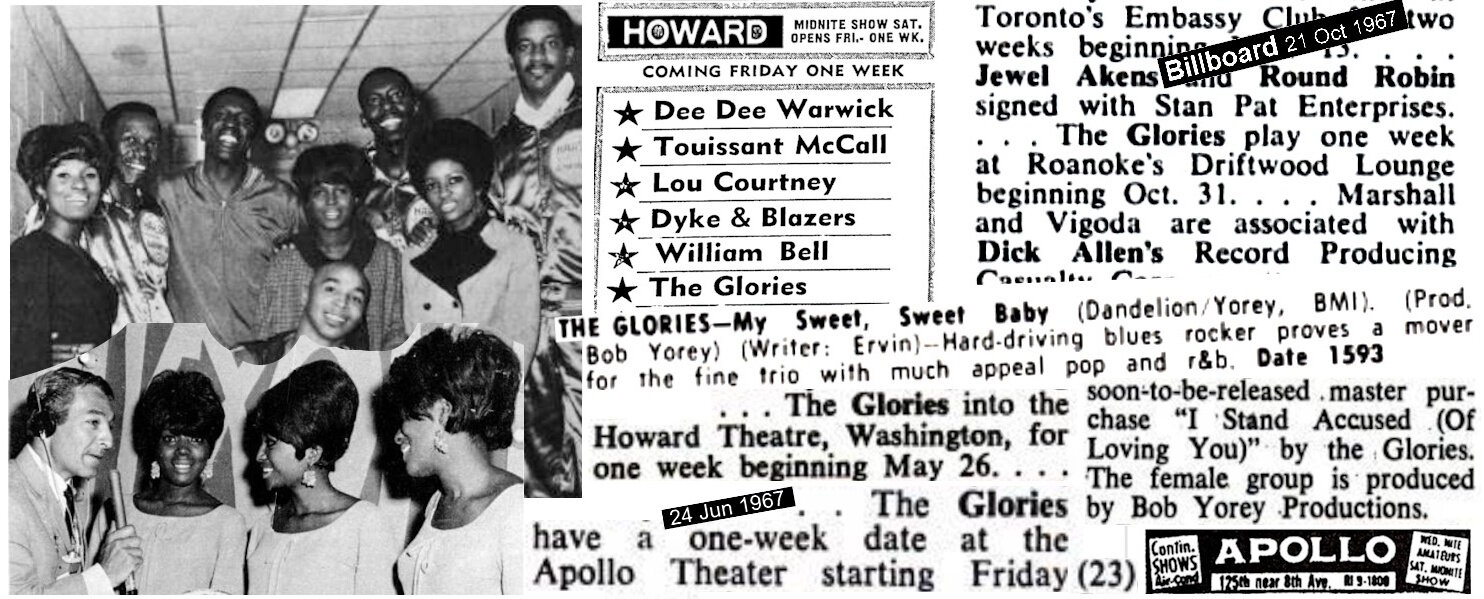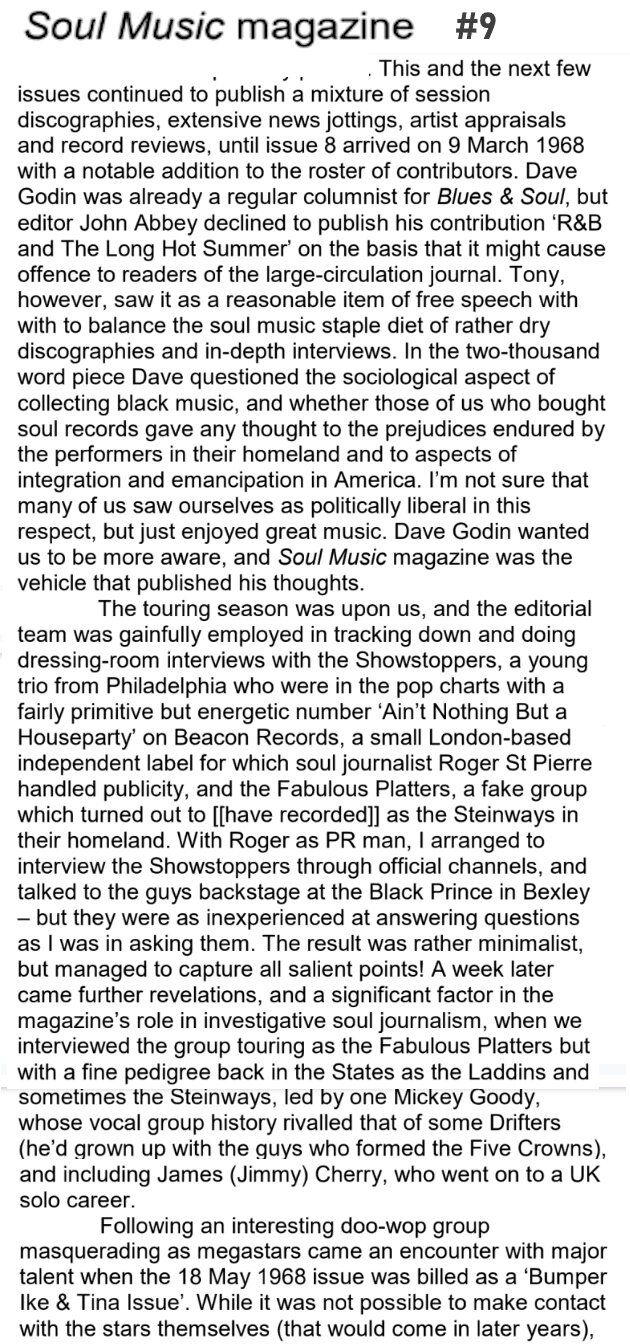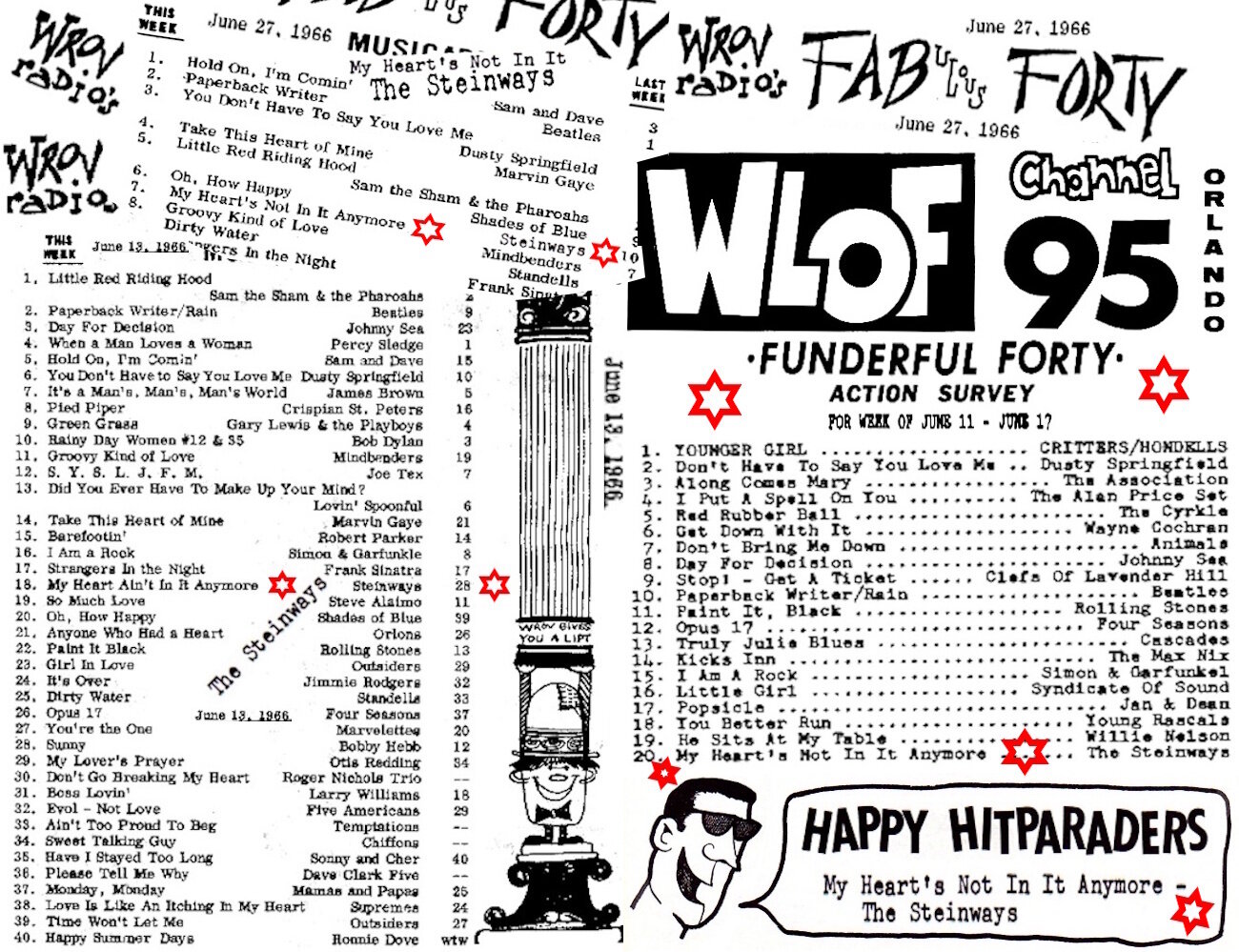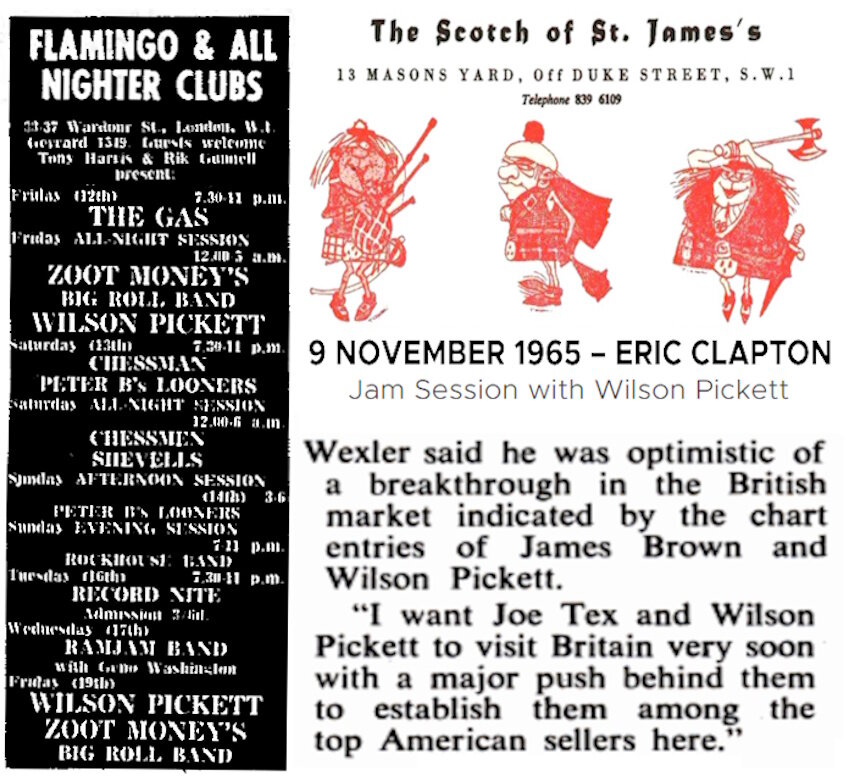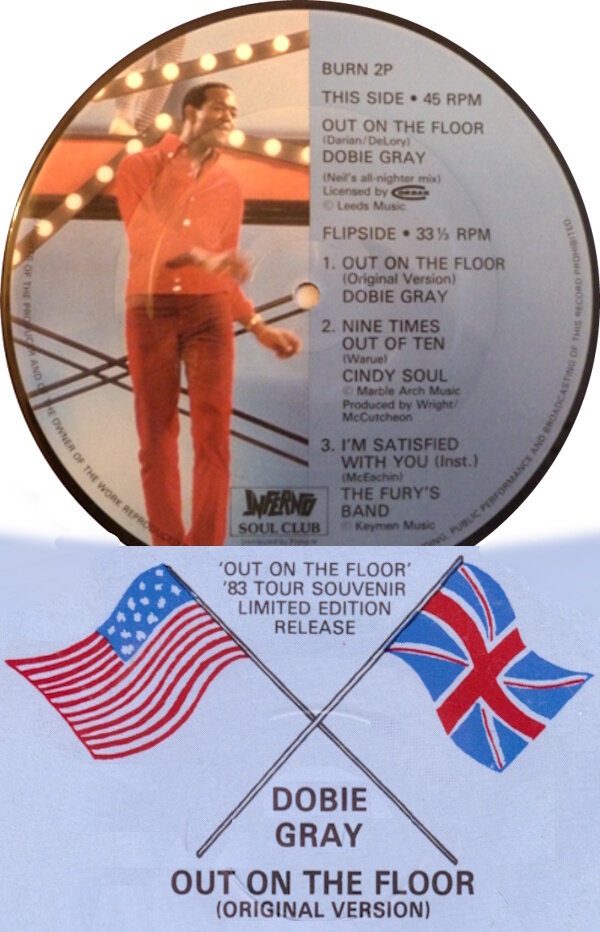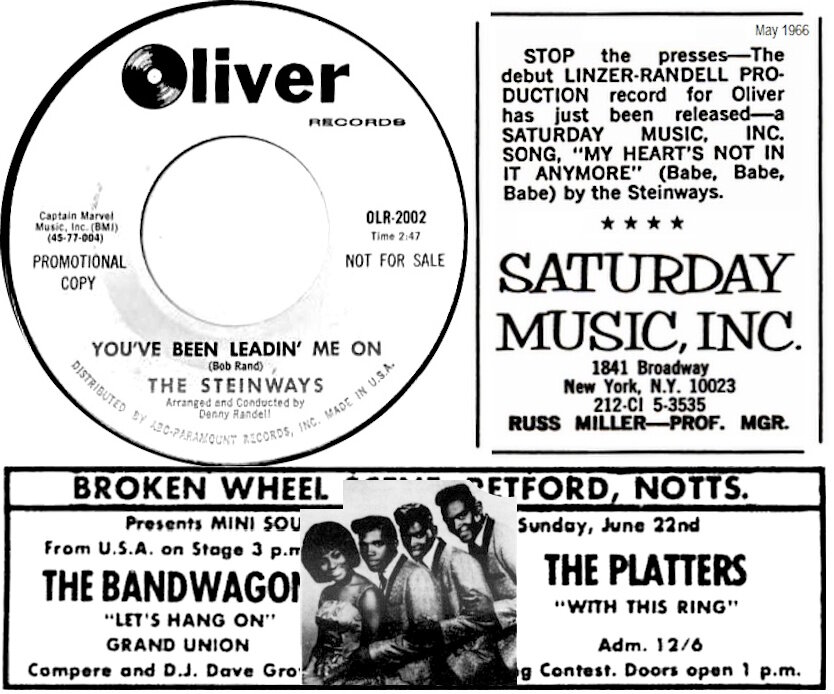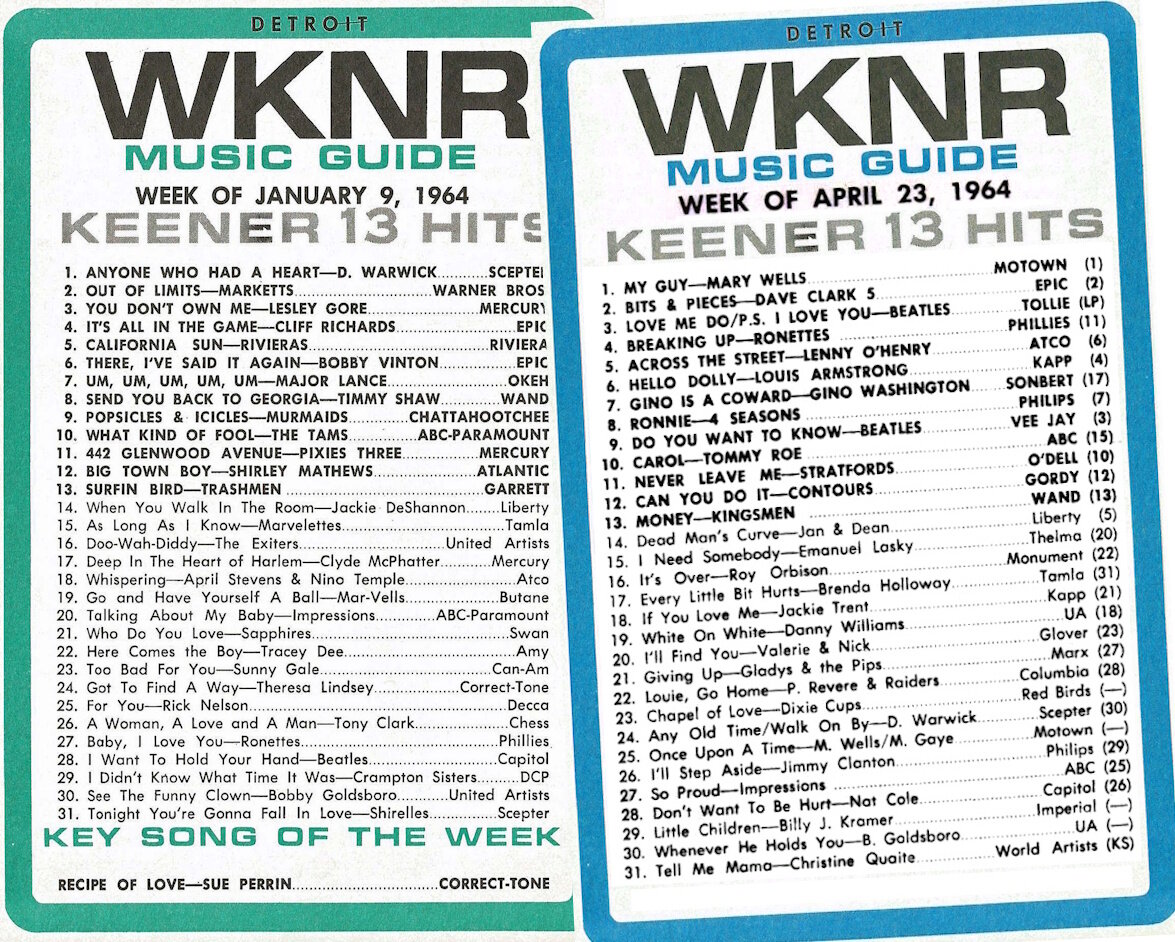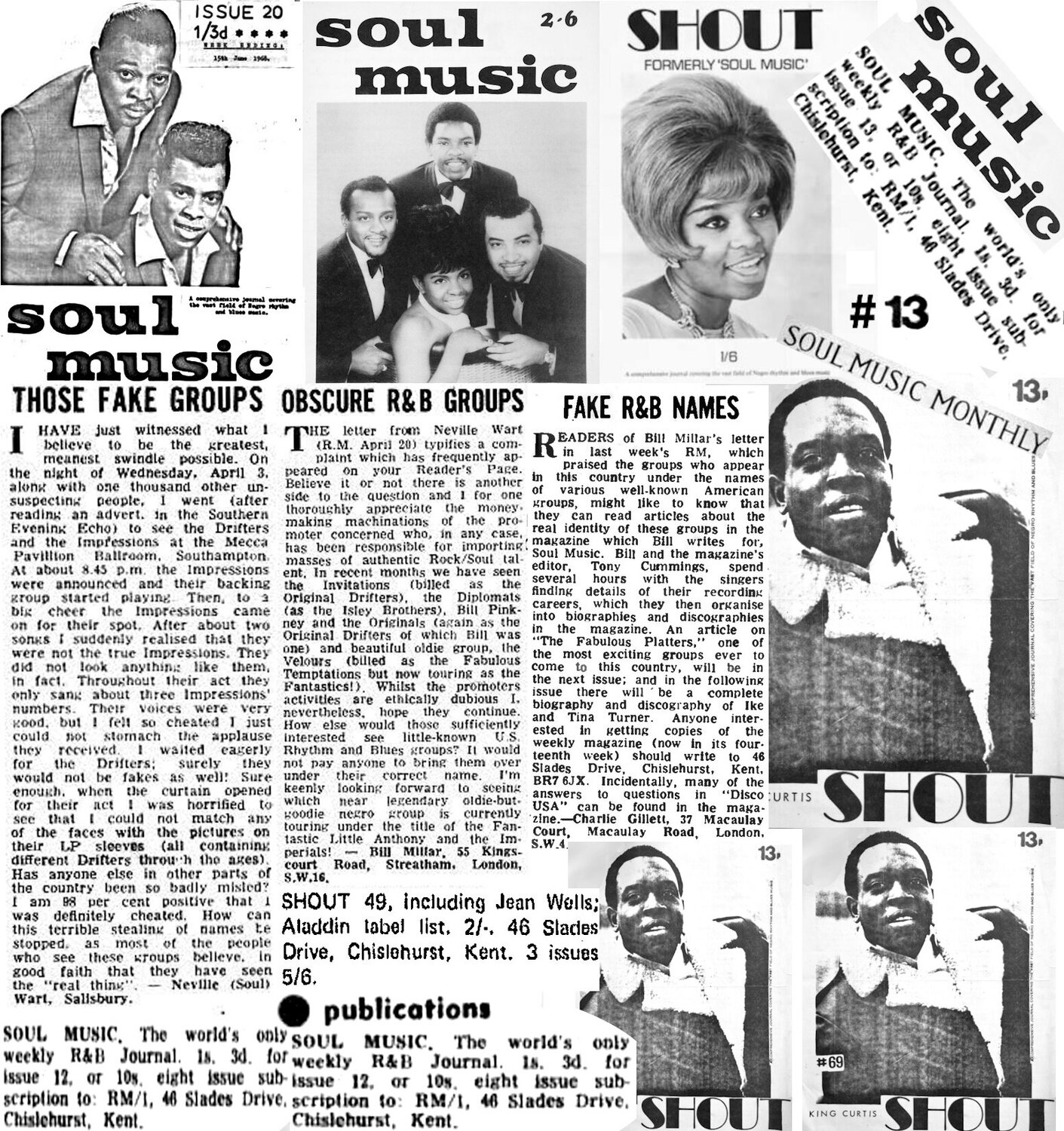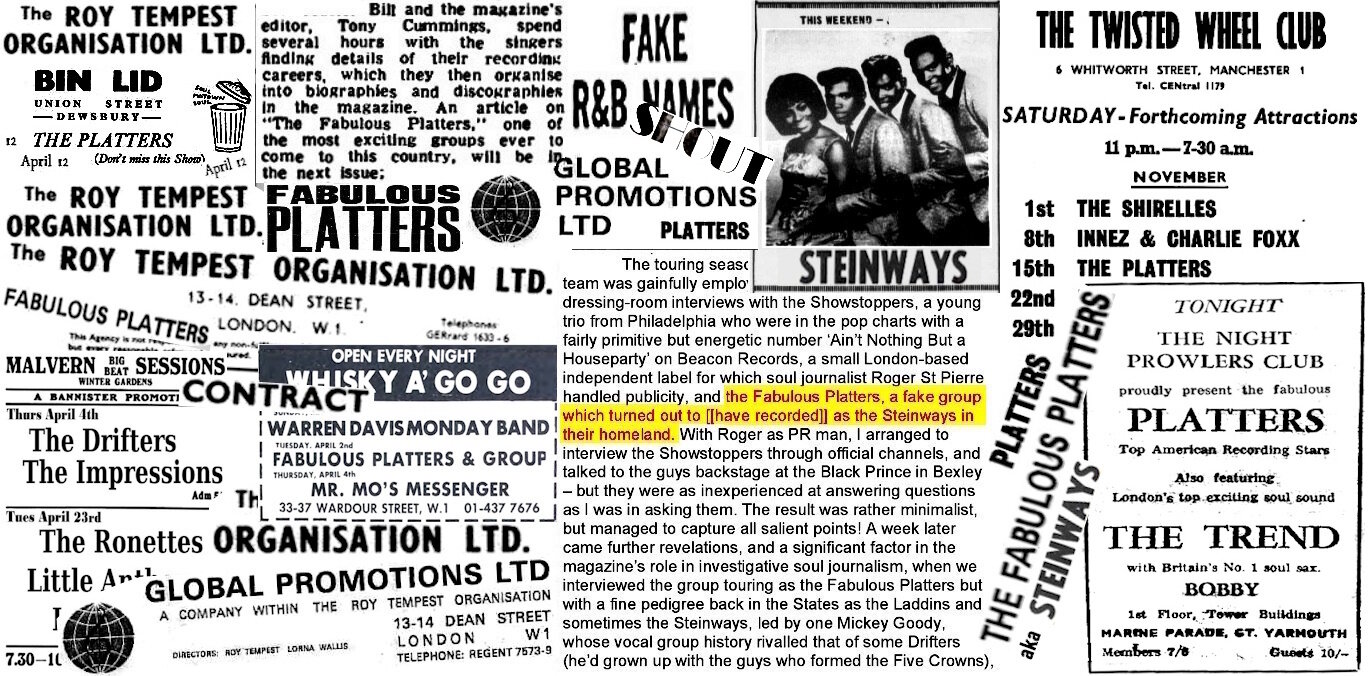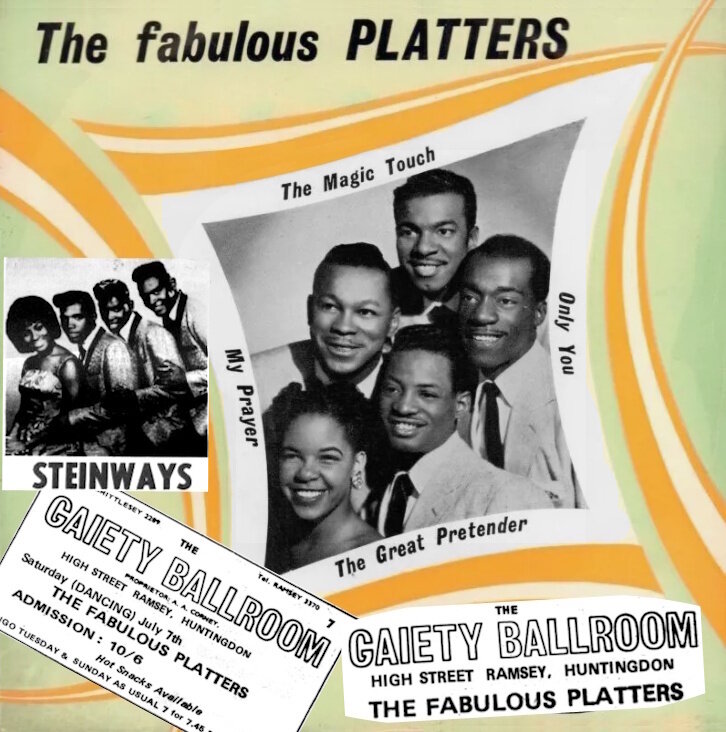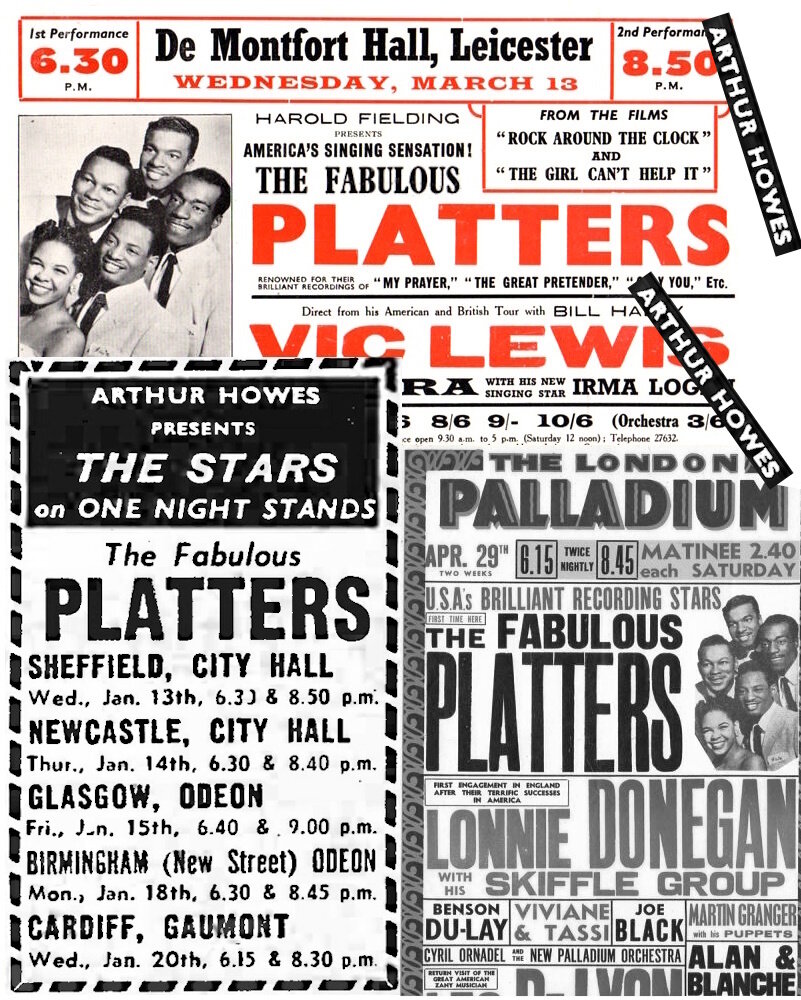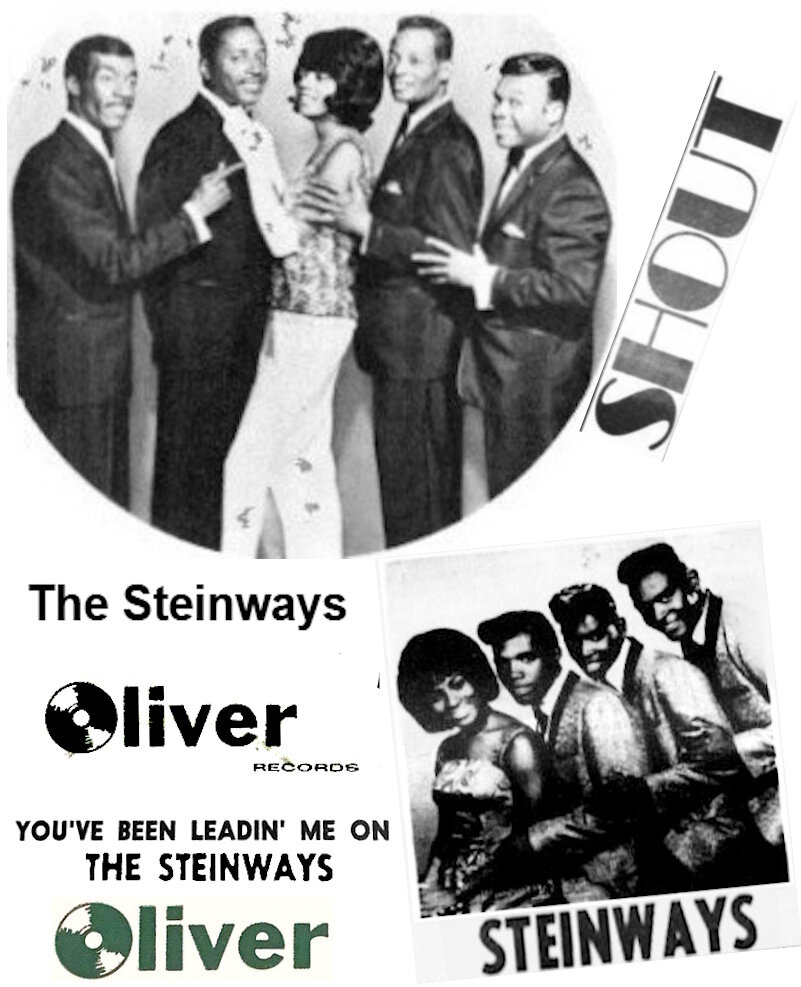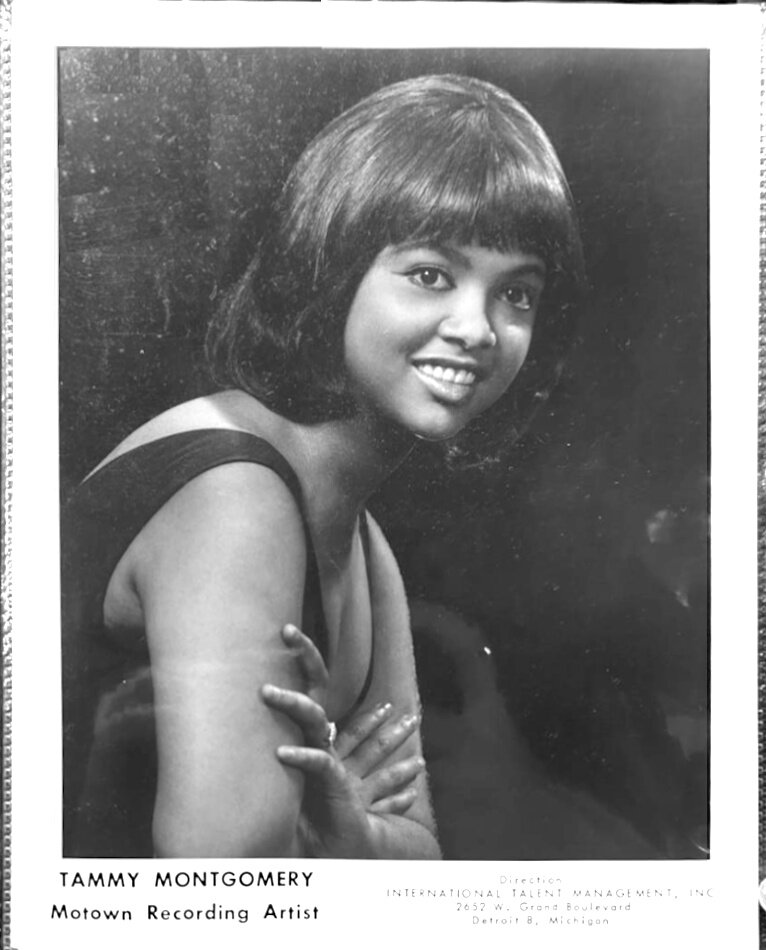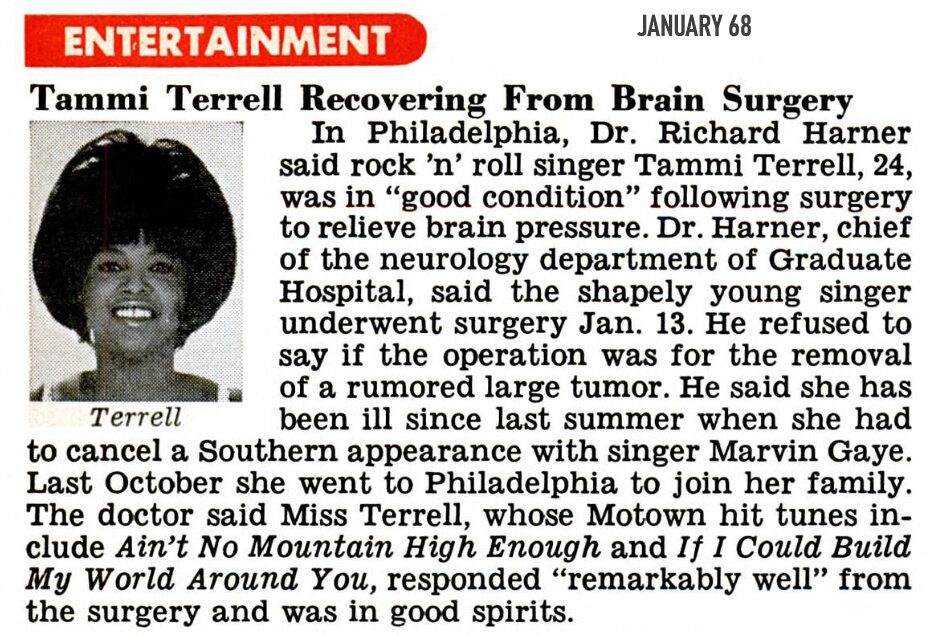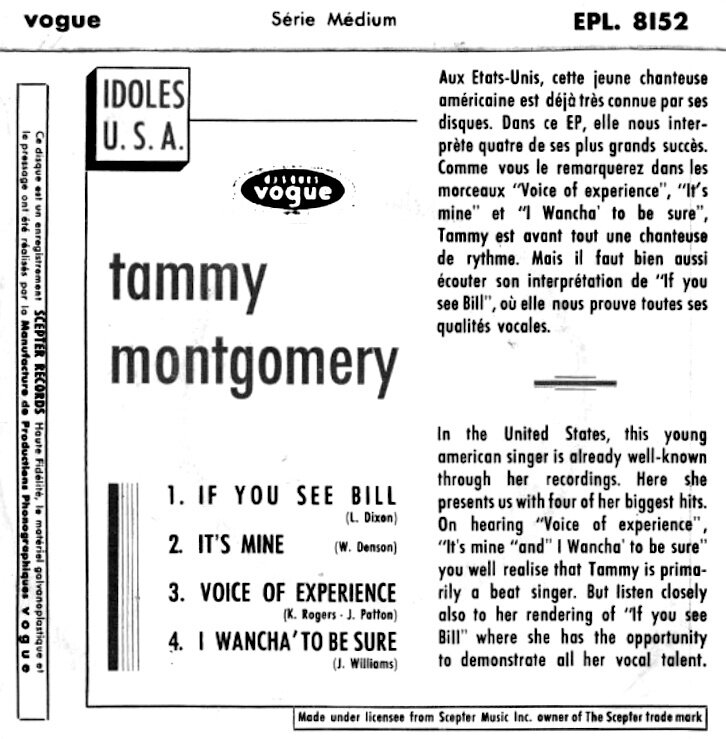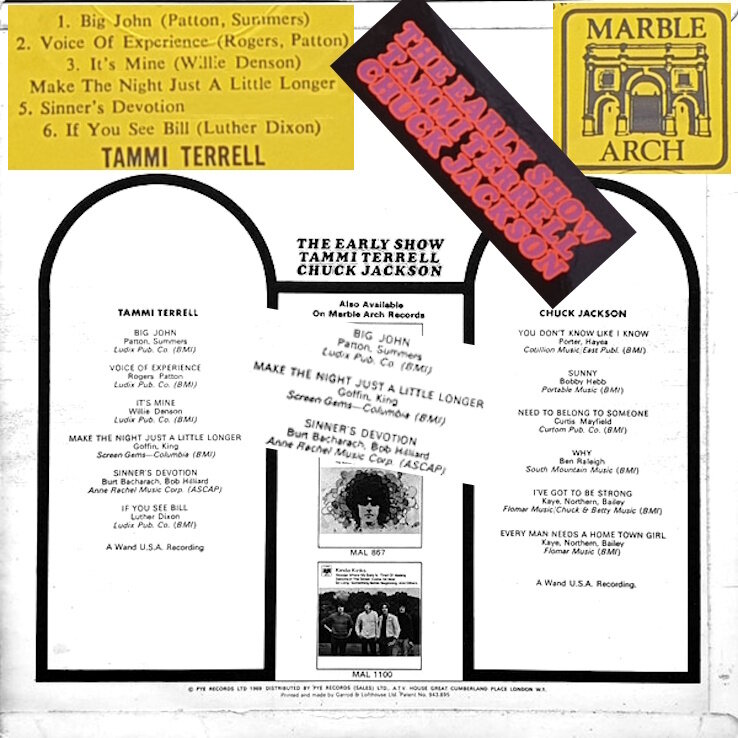Everything posted by Roburt
-
1960's Dance Crazes
A dance for which the top 45 related release was super successful was BAREFOOTING Not sure what the dance actually consisted of, once you'd taken your shoes off, but I bet Robert Parker could have told you. His cut was so successful that even though it was made in New Orleans, (almost as far south in mainland UA as you could get - if you ignored Florida), it still enjoyed wide popularity north of the US border. On Canadian pop radio station CKLG, it even topped their chart ...
-
1960's Dance Crazes
The Slow Fizz, the Freeze & the Philly Freeze (those ones obviously had everyone stopping dead in their tracks when FREEZE was shouted out on the track).
-
Leslie Wilson R.I.P.
He replaced Jeffrey Osbourne as the group's lead singer (1981). He also co-wrote "Love Magic".
-
Grittiest Motown Girl Group Song
If it's OK I want to open up the discussion a bit. Berry Gordy always strived to reach the biggest of audiences, i.e. the white pop market in addition to black buyers. So he played his cards to try to ensure Motown's releases would get much wider radio airplay, reach a far wider audience & thus sell many more units (either 45's or LPs). Hence the Quality Control meetings, the refinement of each acts actions (getting in & out of cars in a dignified way, etc.), the great 'classy' outfits his acts wore, the professional stage moves drilled into each act by Cholly Atkins. He saw the goal of his top acts as being at home in the nations top supper clubs (the Cocacabana, etc). Everything was to be classy & polished to help sell more units. So, a gritty rough performer had to have their 'edges' smoothed off. I'm sure quite a few female (& male) Motown acts were capable of being raw & gritty but they were encouraged not to be. The companies in-house musicians would have had similar treatment -- class playing ruling over their more jazzy extremes. On the singing side, I'll use Yvonne Fair as my example. (SOME OF WHAT FOLLOWS I'M ASSUMING) ... Chuck Jackson signed with Motown in late 67 & had his 1st Motown release in Jan 68. He had toured & was friends with Yvonne. She'd been without a record deal since 66. Chuck & Yvonne were part of the team Motown selected to perform on a big charity gig in May 68. It seems Chuck (on getting with Motown) insisted that they sign Yvonne asap (by May 68 at the latest). She was soon doing shows with Motown acts -- a big one being in early September 69 @ the Apollo that starred Smokey & the Miracles with Yvonne, Bobby Taylor, the Fantastic Four (& the Emotions) also on the bill. She also stepped in to do some concerts with Marvin Gaye when Tammi Terrell was too ill. In the studio, Motown initially cut Yvonne on duet sessions with Chuck Jackson but none of those tracks were released. She was teamed with several producers at Motown but only one single was released "Stay A Little Longer" b/w "We Should Never Be Lonely My Love". The first studio session for these 45 tracks took place on 31 May 1968 but the 45 was released on SOUL (Motown's label for 'robust singers)' in July 1970 (a full 26 months later). The 45 seemed to receive no promotion at all. After that 45, Yvonne would go back into the studio on occasions but her next 45 didn't escape till May 74. Yvonne had a proven record both on vinyl & on live shows but Motown seemed unsure if they should release any of the tracks she had cut for them up to May 74 -- by which time she'd been signed with them for at least SIX YEARS. It seems that she was indeed TOO GRITTY for the company, at least until funky tracks had started to sell in large quantities by the mid 70's. I'd love to get Robb's input on this subject (... & in passing, was Edwin Starr too gritty for the company too ?).
-
Leslie Wilson R.I.P.
Posted on Facebook ... With great sadness The New Birth family mourns the passing of Leslie Wilson. The voice of New Birth passed quietly in his sleep last night. I loved Leslie's vocals, his voice was so distinctive. His work on New Birth's 'Behold The Mighty Army' LP was great. He quit the group not long after to front L.T.D. It was his lead vocal on the big Clifton Hall's MS anthem "Love Magic" (a Richard Sealing spin) ...
-
Grittiest Motown Girl Group Song
This lady was certainly capable of delivering real soul with a gritty edge ... pity more of her early Motown stuff didn't escape at the time ...
-
Grittiest Motown Girl Group Song
Can't really describe Mary Well's vocal style as gritty, it was a lot more smooth than that ... I've always liked this one though. It's a pity she left the company & the track was left in the vaults instead of escaping on 45 ...
-
The Fabulous Platters aka The Steinways
Many folk struggle to understand why a group would return to tour the UK again after they discovered they were being passed off as a different group (i.e they would be a FAKE GROUP) when doing shows here. It's not as simple as that though. Take the Laddins / Steinways for instance. They had started out in the mid 50's and had managed to record & get released a decent number of 45's. However their last single release had been "Dizzie Jone's Birdland" at the start of 1964. They'd added Frankie Gearing to the group line-up & this had revamped their sound. They plugged away & landed a prestigious booking (along with the Drifters & Little Willie John) @ the Harlem Apollo in March 1966. This must have caught the attention of a record company guy as they were signed up to the new Oliver label & a 45 was released in May 66 ("My Heart's Not In It Anymore"). this got some radio action and so a 2nd 45 followed that October. But apart from some decent gigs in Miami (where they were still popular as both the Laddins & as the Steinways, very little was happening for the group. Frankie Gearing jumped ship & helped form a femme trio, the Glories early in 1967. The group were signed to Columbia's Date label and had their first 45 out ("I Stand Accused) in early May 67. Reaction to the single was good, with strong radio airplay leading to entries on radio stn charts across in US. So the girls were added to a touring package that played the Howard Theatre in Washington DC that same month. Just 4 weeks later (June 23rd), they were on @ the Apollo in Harlem. More 45's followed and the Glories were well & truly on their way to glory. The same can't be said of the Laddins. They'd added a new female member, replacing Frankie, but times were proving hard. Work was thin on the ground, the record company went out of business and the group were left in limbo. They must have been eyeing Frankie's popularity rise with a lot of envy. Then in late 1967 an offer came in, did they want to tour the UK. They didn't know they'd be doing so as the Fabulous Platters but that's what transpired. However with little happening for them back in the US, the work / money was welcome. So when they were asked to return to the UK for a 2nd tour, they again accepted the invitation. Word soon spread in the UK that the group put on a very good show & bookings kept coming in. At one if these, the Soul Music / Shout magazine team were in attendance and managed to do an interview with the group. This interview was published in the April 68 edition of their mag. Anyone got that edition of the mag ?
-
Project wants stories linked Black American US airmen
I'm retired (so have lots of time) & am a massive soul fan. So I do research on soul related matters all the time (I write for a UK soul magazine, so the research is for that purpose). However, I come across loads of facts that sometimes stick in my brain (whilst other info disappears into the mist of my mind). By the way., I guess that Bentwaters & Woodbridge bases also staged music shows to keep the guys there entertained.
-
Project wants stories linked Black American US airmen
Wilson Pickett did 2 UK tours in the mid 60's & then another one around 1970 (when he was backed by the Midnight Movers US group). He would most probably have used UK backing bands in 64 / 65 -- Zoot Money's Big Roll Band ?). The 60's tours were arranged by his US & UK record companies (Atlantic US / Decca UK) and Decca may have details of what gigs he did back then. Another venue back then was ... Bluesville ’68 Club, St Matthew’s Baths, Ipswich, Suffolk. A US group that I do know played Mildenhall base was the Fantastics (ex the Velours when US based) -- they did a show on the base on 15 December 1968. Earlier (when jazz was more popular), US & UK jazz bands played shows at the base. One such I know about was UK band Kenny Ball & His Jazzmen. Lots of British jazz fans are very knowledgeable about such things & also may be able to help you with act / date info. Pop groups also played the bases. One such being David Essex & Mood Indigo in January 67. At the time, his latest 45 was a cover of a Ray Charles song. They also did a show at USAF Stanton base, Bury St Edmunds, Suffolk.
-
Project wants stories linked Black American US airmen
By Leaping Lord Lucas do you mean Lucas (Bruce McPherson Lucas) who used to be the singer with the Mike Cotton Sound ? ... I guess you do. . . . If so, someone on here may have been in touch with him & may have a way of contacting him. Unfortunately, a lot of the people who were involved have now passed as the time period we're talking about is the 1960's & 70's. Sonny Childe aka R B Greaves passed a good few years ago. In addition to the acts who did shows at the military bases for the USO, lots of US artists doing normal UK tours would be booked to play the East Anglian military bases while over here. The good thing about that is ... they would be teamed with a UK backing band (usually young British musicians who loved soul music). Though many of the American singers themselves have passed, some of the British musicians who backed them up are still around. Check out the web site GARAGEHANGOVER for details. You can also put a post up there telling readers what info you are after & asking folk who played gigs on the bases to get in touch. There's also a guy on Facebook who would act as tour manager / driver for visiting US acts & he most probably took them to some gigs at US military bases. I recall that the UK magazine, Blues & Soul had a section around 1970 titled STARS & STRIPES and that dealt with military linked entertainment matters from the time. I have all those B&S mags up in the loft (lots of others here will also have copies) & if I can find the time I will check them for relevant info. I'll also message you with regard to my book on Kenny Hamber & his shows at Lakenheath & Mildenhall. I wrote it quite a while back but do instantly recall him telling me he went on the bases' radio stations to promote his shows. Is there anyway for you to contact the bases about archived radio station shows or details. Quite a few venues in Norfolk would book visiting & UK based soul acts back in the late 60's / early 70's. There was the Industrial Club in Norwich (which became the Talk & the Melody Rooms) and the Royal Links Pavilion, Cromer + others. Facebook may have local groups where the members have discussed old shows at these venues. HOPE THAT HELPS.
-
Project wants stories linked Black American US airmen
Lots of US military men in the UK were entertainers on the side & interacted with locals. The likes of Sonny Childe (aka R B Greaves) came from a military family & was a constant on the UK club scene for some years. Others (from bases close enough to London) would frequent London soul clubs that held allnighters -- when given the opportunity they'd get up on stage with which ever band was performing that night. . . . Also lots of US based black singers / groups were brought over by USO to perform at bases such as Lakenheath, Mildenhall & Upper Heyford -- there's an old thread on here about US based singers doing gigs at US bases overseas. USO arranged Tours of UK / European USA military bases. I documented Kenny Hamber's experiences of playing USAF bases in the UK in the book he & I penned about his life & career. I also researched the US acts that played these bases many years ago using the base's in-house newspapers (copies of which were then kept by the library in Norwich). I'm sure folk on here will be able to help you out. I used to drive passed RAF Upper Heyford most days in the 1990's & used to see the bases military police cars going about their business (heading between the base & the personnels housing estates in Bicester & Brackley). Before that I would inspect the new USAF housing estate infrastructure when it was being constructed -- unfortunately this was before any military folk had moved in. I (later) got to know local Brits who would visit the base to go bowling & would therefore fraternize with people on the base.
-
Northern Soul acknowledged in Jubilee Parade
Out on the Floor by Dobie Gray A classic of northern soul, which Starmer says reminds him of his early days in London, where he built “lifelong friendships”. The song was first released in the UK in 1975, when it reached number 42 in the charts. A second release in 1983 saw it reach number 95.
-
The Fabulous Platters aka The Steinways
David, we (UK soul fans) all had a lot to learn in 67 / 68 / 69, which is how Roy Tempest got away with his scam at the time. A few were ahead of the curve (the Shout mag guys). We may not have been seeing who was advertised, but as others have said ... the 'fake groups' didn't disappoint -- they were all seasoned live performers & good at what they did. The Fabulous Platters who played the Glasgow Odeon were the real group back in the late 50's.
-
The Fabulous Platters aka The Steinways
-
Bob & Fred - I'll be on my way
Yes, you can see that from the 2 WKNR charts I posted from that period; 45's on their chart from Timmy Shaw, Shirley Matthews (Big Town Boy), the Sapphires, Theresa Lindsay, Tony Clarke, Lenny O'Henry, Gino Washington, Emanuel Laskey + Valerie & Nick. Also a climber on Correct-tone; Sue Perrin.
-
Bob & Fred - I'll be on my way
Robb, weren't the Detroit airwaves dominated by WKNR (a pop stn) and CKLW from over in Windsor, Canada (another pop stn) back in 1964 ?
-
The Fabulous Platters aka The Steinways
Shout magazine had been titled Soul Music Magazine & Soul Music Monthly before it took its more famous name. I believe it would have been an edition from June or July 1968 that would have contained the article about the Steinways (probably Soul Music #13) ....
-
The Fabulous Platters aka The Steinways
From checking calendar dates back then, they must have been on @ the Wheel on Saturday November 15th, 1969. Their gig @ Dewsbury's Bin Lid was on Saturday 12th April 68 -- so they must have done 2 UK tours in 1968. They were on in London @ the Whisky A Go Go on Tuesday April 2nd 1968 (so the same tour as they played the Bin Lid). On-line there are a few bits about UK beat group the Trend (see Night Prowlers Club ad above). The Platters were on at the Night Prowler, Gt Yarmouth on 18th January & at the Bluesville ’68 Club, St Matthew’s Baths, Ipswich on 22th January. They also did shows at the Hub in Barnsley on 7th January and @ the Dungeon in Nottingham on 12th January. It's stated that on the Fabulous Platters' January 1968 tour the Trend backed them up and then again later that year on what was a 2nd highly successful UK tour (during April / May / June 68). A group member (the Trend) recalls that the Platters (Steinways) had a very professional stage show. He also said "They were always immaculately dressed and had a nonchalant side step when approaching their microphones, all part and parcel of their stage routine”. The Trend backed up a number of Roy Tempest's American soul groups at gigs across the UK. The Showstoppers being in the UK is mentioned in the Shout Magazine bit above. At the end of March 68, Milton Samuel (Beacon Records) organized a UK visit for the Showstoppers. The group making the 1st of their three appearances on the UK TV program TOP OF THE POPS on April 18th. They were then on @ the Cromwellian Club (London) on Monday 22nd April (advertised as the group's 1st ever live London date. So that must have been around the time, the Steinways were interviewed by the Shout mag bunch. Hope that helps folk recall if they were at any of their UK shows.
-
The Fabulous Platters aka The Steinways
In 1967 & 1968 + I believe in 1969, the Steinways signed contracts with Roy Tempest to do tours of the UK. At first they thought that with a long history as the Laddins and a re-invention as the Steinways, that they'd be playing gigs as themselves. But Roy Tempest was 'King of the Fake Groups'. He knew that the resurrected Musicor version of the Platters had a few hot songs in UK discos ("With This Ring, "Washed Ashore, "Sweet Sweet Loving", etc.). The Platters, now led by Cleveland's Sonny Turner, had a 4 male + 1 female line-up. The Laddins had started out as a male group but towards the end of their period as the Laddins they'd added a female singer too; Frankie Gearing. Soon after, at their record labels behest, they'd been renamed the Steinways, to update their image (the Laddins had started out as a doo-wop group in the mid 50's). The Steinways career wasn't really going anywhere much, though they still got lots of bookings in Florida under both their names. So when Roy Tempest asked if a mixed male / female NY based group were up for a trip across the pond to play some gigs in the UK, they were approached & jumped at the chance. Finding themselves now badged as the Fabulous Platters & teamed by Tempest with a UK backing band, they hit the highways of Britain. The group was still comprised of 3 males & 1 female, though Frankie Gearing had already jumped ship (earlier in 67) to form the Glories. The group were still a tight outfit though & put on a really good show. By the time of their 2nd UK visit, the 'fake group scam' was out in the open & visiting outfits were being interviewed to ascertain who they really were. Tempest had badged the group as the FABULOUS PLATTERS, a wise choice as it turned out. The real Platters (back in their Mercury days) had toured the UK. A recent release of theirs (then) had been a UK EP titled the 'Fabulous Platters' and so they'd been advertised on their UK shows under that title. It turned out that that decision would, some years later, play into Tempest's hands. Good reports of their shows were coming out & so there was demand from additional venues for the group to appear there too. On one of their UK visits, they were approached by Tony Cummings (Shout magazine) & he interviewed the group (who were still led by Mickey Goody at the time). Info on the Laddins / Steinways on-line states ... The Laddins refreshed their lineup with new lead singer Yvonne "Frankie" Gearing, Alfred Ellis, and Dizzy Jones, joining Goody and the Marcus brothers; other members came and went but these were the main cogs. The new group had one single on Butane Records, "Dream Baby" b/w "Dizzy Jones Birdland," in 1964 ... before evolving into the Steinways, a group with a similar sound to Motown's Elgins and Philadelphia's Formations. Anyway Tony Cummings & the Shout magazine guys interviewed the group & printed an article in the next edition of their mag. They were highly impressed with the group & their performance & so started to campaign for them to get more UK gigs. I seem to remember an ad for a London club that contained info they'd written to promote the group's show -- I recall it stating who they really were & that they put on a great live show (I'll have to try to track it down again). To further muddy the water, discogs has an entry for the Steinways & their Oliver 45 releases ... BUT the photo up there is actually of the Musicor version of the Platters (lead singer Sonny Turner). ANYWAY ON TO MY QUESTIONS ... 1/ anyone got a copy of Shout Magazine that includes the interview with the group ? If so, what edition of the mag was it in & can you copy it & post it on here? 2/ If anyone got to see them live back then & can recall much about their show, I'd love to hear about it -- already been told that John Marriott saw them at the Black Swan in Sheffield. He stated that they put on a good show and didn't really do any Platters' songs.
-
New Soul Releases
NOT REALLY NEW ... as it was made available around 9 months ago (though I hardly ever do digital) ... BUT caught the group on TV last night & they have been mentioned on here before ... this track really is the d*gs b*loxs ... Annie & the Caldwells "Wrong" ...
-
Andrea Hendry or Janice version of I need you ?
Little if anything is known about Janice. She's obviously a young lady & as Andrea Henry was Herman Griffin's (aka Herman Lewis) girlfriend in 1968, I'd guess Janice had taken over in that role by 1970. Reuse of the old backing track on this cut would point to it maybe just being a 'cheaply made throwaway' B side track ("I Thank You Kindly" being the plug side). It must have been licensed in by New York based Roulette, the deal being done with Griffin. Of course Roulette was infamously run (with an iron fist) by Morris Levy -- and was reported to be used as a front for money laundering by the Genovese crime family. The labels main act was pop group Tommy James & the Shondells & Tommy always stated that he was 'forced' to sign with the label. The Janice 45 was released in late June / early July 1970. At that time, the label was doing good business with 3 Degrees tracks that were also outside produced soul tracks (their "Maybe" selling well at the time). For the UK, Roulette teamed up with Major Minor. Not unsurprising, as Major Minor was run by the guys who owned Radio Caroline & Roulette Records sponsored a show on Radio Caroline presented by US DJ Jack Spector (this being taped in New York). Major Minor was releasing lots of US soul stuff in 1970 (Kim Weston, Howard Tate, Johnny Nash, Maxine Brown, Lenny Welch, Cissy Houston) plus stuff on their UK Roulette imprint (Geraldine Hunt), so the Janice 45 just might have been considered for UK release too. Two US Roulette 45's ( R7076 & R7078) from a similar time to the Janice single (R 7083) were put out in the UK but equally the US hit by the 3 Degrees ("Maybe" - R7079 ) wasn't. The Janise 45 got very little radio airplay in the US though it did do well on Denver based rock stn KTLK. Later in the 70's, there was a soul group named Janice who made some fine MS tracks but in 1970 they were still down in Nth Carolina and going by the name of the Reggie Sadler Revue back then. They never seemed to have any connections to Griffin / Lewis, though they did relocate in 1971 to cut for De-Lite in New York. So who Janice actually was I doubt we'll ever now know.
-
The 'Invention' of TAMMI TERRELL
I also asked my questions on SOULFUL DETROIT and got some of the answers to my questions ... Yes, they confirm it was Berry who changed her name to Terrell & who had her signed to a contract with Motown. . . . Over there (SDF) they also passed along this info .... On 16th Sept 65 she was in the Motown studio cutting "I Can't Believe You Love Me" and "Memory Chest" -- still noted down as being Tammy Montgomery. Tammi dubbed her vocals onto the cuts on 20th Sept 65. In November 1965, she was back for further studio sessions -- AND for these she was credited as Tammi Terrell. Her health had deteriorated to such an extent that by Jan 68 she needed a brain op.
-
News: New Album - Soul Jamaica - Various Artists - Soul Jazz Records
In the mid 60's, I liked / bought ska & Bluebeat 45's. When that genre of music stopped being played in mod / soul clubs, I stopped buying most reggae. HOWEVER, I was always a sucker for reggae versions of soul songs. Bought quite a few, including reggae versions of "Get Ready", "La La Means I Love You", etc. Some reggae artists didn't have the greatest degree of imagination. Irvin Brown cut lots of soul songs, including a few AL GREEN songs. He took the stage / recording name of AL BROWN & cut songs such as "Love And Happiness" and "Here I Am Baby". Think there was a similar compilation CD to this released in the past (got a copy here somewhere).
-
The 'Invention' of TAMMI TERRELL
Is it known if there are more unreleased pre-Motown tracks by Tammy / Tammi. Her US & UK (Marble Arch) LP contained 3 from Scepter / Wand that hadn't escaped on 45 ...

